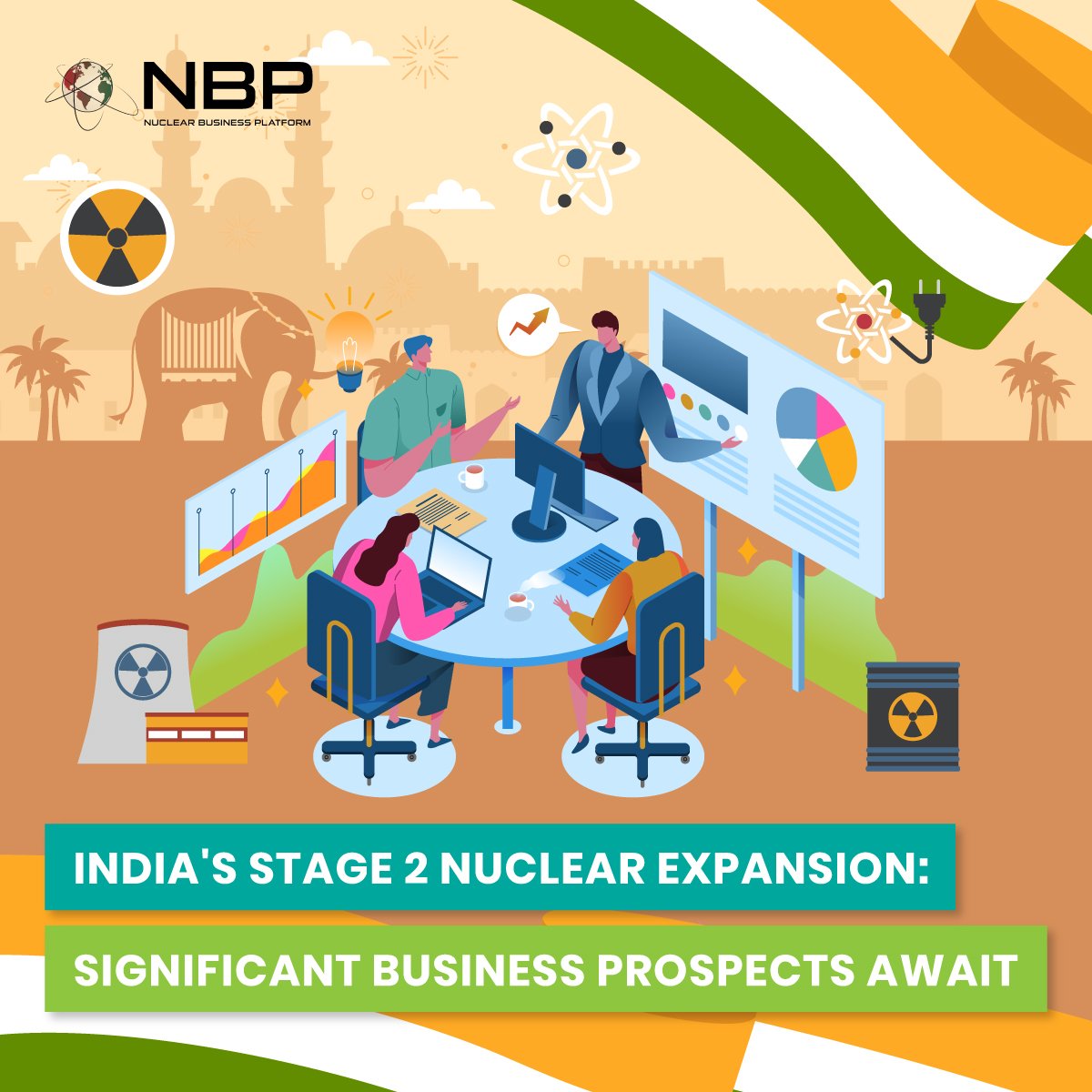India's Stage 2 Nuclear Expansion: Significant Business Prospects Await
India’s nuclear energy sector currently contributes 3% to the nation’s electricity generation, with an ambitious target of reaching 9% by 2047. Presently, India operates 23 nuclear reactors, with a total capacity of 7.48 GWe. The sector is on an aggressive expansion path, with 12 reactors under construction (9.4 GWe), eight reactors with financial approval (5.6 GWe), and 18 reactors with preliminary government approval (24 GWe). Collectively, these efforts indicate a pipeline totaling 46.48 GWe, aligning with India's long-term goal of achieving 100 GWe by 2047.
Milestone Achievement: Prototype Fast Breeder Reactor (PFBR)
India has reached a significant milestone in its three-stage nuclear power program with the commencement of core loading at the PFBR at the Kalpakkam nuclear power plant. This milestone marks India's entry into the second stage of its nuclear program, bringing the country closer to perfecting fast breeder reactor technology. Once commissioned, India will become the second country, after Russia, to operate a commercial Fast Breeder Reactor (FBR). BHAVINI, a wholly-owned enterprise of the Government of India under the administrative control of the Department of Atomic Energy (DAE), is spearheading the construction of the 500 MWe PFBR at Kalpakkam. The PFBR is a precursor to future FBRs and represents a significant advancement in India’s nuclear capabilities.
The Three-Stage Nuclear Power Program
First Stage - Pressurised Heavy Water Reactors (PHWRs): Utilizing natural uranium fuel.
Second Stage - Fast Breeder Reactors (FBRs): Employing plutonium as fuel. The PFBR will generate power by recycling plutonium and depleted uranium recovered from spent fuel of PHWRs. FBRs, with a closed fuel cycle, are designed to produce U-233 from thorium, launching the third stage of the program.
Third Stage - Advanced Reactors: Utilizing U-233 as fuel in the thorium-uranium cycle. This stage aims to fully leverage India's vast thorium reserves.
Future Prospects and Expansion
Following the PFBR, India plans to construct two additional 600 MWe Fast Breeder Reactors (FBR-1 and FBR-2) at Kalpakkam. Initially, the FBRs will use uranium-plutonium mixed oxide (MOX) fuel, with uranium-238 blankets undergoing nuclear transmutation to produce more fuel. The eventual use of thorium-232 as a blanket material will further generate fissile U-233, crucial for the third stage.
Opportunities Arise in India's Second Stage Nuclear Expansion
India's successful core loading of the PFBR marks a turning point, not just for its nuclear energy ambitions, but also for the business landscape. This advancement ushers in the second stage of the nation's three-stage nuclear program, opening doors for a multitude of business opportunities across various sectors.
Investment in Infrastructure
The construction of the PFBR and the planned additional FBRs necessitate significant infrastructure development. This includes the construction of the reactors themselves, as well as the ancillary facilities required for their operation. Businesses specializing in construction, engineering, and project management can find ample opportunities in this sector.
Supply of Materials and Equipment
The operation of FBRs requires a range of specialized materials and equipment. From the uranium-plutonium mixed oxide (MOX) fuel to the advanced materials used in the reactor cores, there is a demand for high-quality, reliable supplies. Companies in the fields of mining, materials science, and manufacturing stand to benefit from this demand.
Technological Innovation
The second stage of India’s nuclear program involves cutting-edge research and innovation in nuclear reactor technology. It fosters advancements in reactor design, materials science, safety analysis, and operational efficiency. Technology firms, particularly those specializing in areas like automation and artificial intelligence, can find opportunities for collaboration and innovation.
Services and Maintenance
The operation of FBRs involves a range of services, from routine maintenance to waste management. Companies offering these services can expect a steady demand as the number of reactors increases. In addition, there is a need for quality assurance and regulatory compliance services to ensure the safe and efficient operation of the reactors.
Skilled Workforce
The expansion of India’s nuclear sector will create jobs for a highly skilled workforce. From engineers and scientists to technicians and safety specialists, there is a need for trained professionals in this field. This presents opportunities for educational institutions and training providers to offer specialized courses and training programs.
Hence, India's advancements in nuclear technology and its structured three-stage program present significant investment opportunities. The government's invitation for private firms to invest approximately $26 billion in the nuclear energy sector underscores its commitment to expanding nuclear capacity. This initiative highlights a robust market for nuclear technology and infrastructure investments, positioning India as a key player in the global nuclear energy sector. With a clear roadmap and significant milestones achieved, India offers a compelling case for stakeholders interested in sustainable and advanced nuclear energy solutions.
The 5th edition of India Nuclear Business Platform (INBP) will take place in Mumbai this 19-20 November 2024. The industry meeting will feature all the officials and players across the Indian nuclear supply chain. For more information on this meeting including exhibition opportunities, click here



